NOTE: As an Amazon Associate, I earn from qualifying purchases. Learn More.

Everything You Should Know About Solar Panels
In the 21st century, the world runs on energy. Whether it’s a light in your home, the television in your living room, the light post on your street, or the stoplight down the road, electricity in some form is required to power them.
Electricity is created in numerous ways, and most towns and cities rely on power plants to generate their electric power. However, in recent years there has been a growing trend of utilizing alternative energy sources. One of the biggest examples is solar energy, which is gathered using solar panels.
It’s pretty simple – solar energy is infinite as long as we have the sun, and that’s not going away anytime soon. Using the sun for energy is not only an infinite source, but an environmentally friendly choice as well.
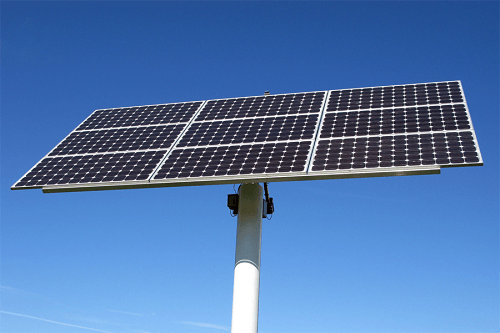
How does Solar Energy Work?
Solar energy is created by harvesting sunlight and converting it into a direct current. This current can be sent straight to a device being powered, or inverted into an alternate current and passed along either to a battery or through an electrical system. Things are actually a bit more complicated than this, but we’ll touch on that later.

Share this Image On Your Site
Advantages of Solar Power
Solar energy provides multiple benefits to everyone in both direct and indirect ways.
The primary advantage of solar power is the fact that it is completely renewable, unlike power that comes from sources such as fossil fuels. Solar energy can be harvested in both sunny and cloudy conditions. If it’s daytime, there is energy available, bottom line.
Solar energy is also completely clean, and doesn’t release harmful emissions in the air. As climate change and pollution become bigger and bigger issues, clean energy sources in turn become more of a premium, and can help to combat emissions and air pollution very effectively by cutting down on the need for them in the first place.

Many cities are ramping up their efforts to generate more electricity from the sun. For instance, San Francisco now requires solar panels on every new building over 10 stories tall.
Cheaper Utility Costs
Another big reason for going solar is the savings it provides. Whether you are powering smaller devices such as phones and laptops, or have a home that has been completely overhauled to be a solar-powered home, the energy savings you receive from not relying on an electrical energy grid or power company can add up fast.
Many local, state, and federal governments even offer tax credits and rebates for homes that convert to solar energy, which can help to pay for the conversion and equipment in the first place.
Portability
Solar power also allows for you to have a renewable power source on the go. This can manifest itself in a variety of ways, but typically involves portable generators, portable solar chargers, and even solar backpacks. Bringing these solar devices along during outdoor excursions and camping trips provides you with an infinite supply of power for several electronic devices and small appliances.
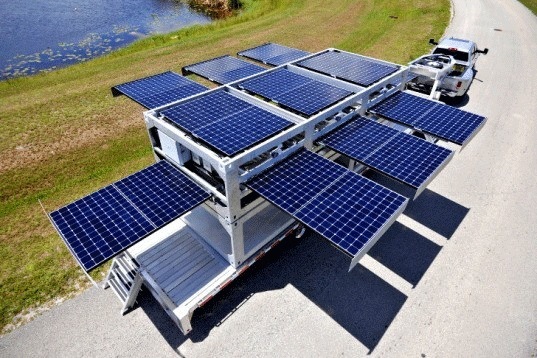
What are Solar Panels?
Solar panels are the items that do most of the work when it comes to producing solar energy and turning it into usable electricity. They almost always come in a square or rectangular shape, and contain what are called “solar cells.” These solar cells themselves are composed of either one or two layers of semiconductor waffles, and often utilize silicon, phosphorus, and boron materials.
These solar panels are then used to capture the energy from the sun, and convert it into electrical power. Without solar panels, there is no solar energy.
How Do Solar Panels Work?
The way solar panels work is actually fairly simple. Solar panels absorb the photons that come from the sun’s energy, which is what creates the resulting electrical current. This process is known as the Photovoltaic Effect.
The energy created via the photons hitting the surface of the solar panel causes the electrons to be disrupted from their atomic orbits, and then released into the electric field that has been generated by the solar cells. The cells in the panels then pull the electrons into a directional current (DC.)
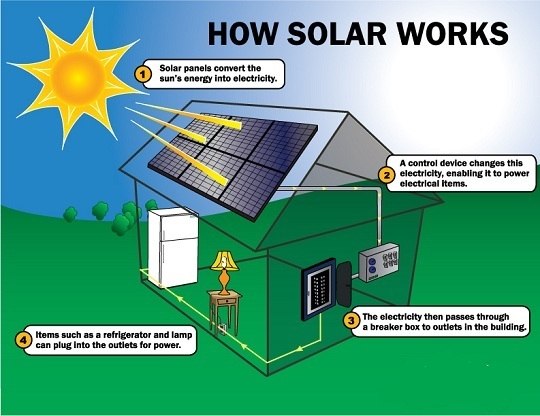
As far as solar panels for home use is concerned, having enough panels operating at the same time generates enough power during the day to be used in the home at night and into the next day.
In off-grid solar panels uses for things like backup generators or portable generators, a battery pack, charge controller, andinverter are used instead. In this case, the solar panel array sends direct current (DC) electricity to the charge controller and into the battery pack.
The power is then drawn from the battery pack to the power inverter, which then takes the DC current and converts it into an alternating current (AC) so that can be used for standard appliances and devices powered by normal plug-ins.
Solar panel arrays can configured to meet certain electrical load requirements for numerous items, including buildings and homes, RV’s, street and traffic lights, and really just about anything else.
Types of Solar Panels
There are quite a few different varieties of solar panels in existence, but two main types in particular are used the most frequently: polycrystalline and monocrystalline. Before going into the details of these two panels, it’s first important to learn what crystalline silicon is in the first place.

Crystalline Silicon
Like the name says, crystalline silicon is the crystallized form of silicon. Crystalline silicon has a wide range of uses, and is almost always found in computer microchips. Solar panel cells require a purer version of crystalline silicon, however.
Solar cells made from crystalline silicon are single-junction cells, and are often more efficientthan other types.
Monocrystalline Solar Panels
Panels constructed from monocrystalline have cells that feature a distinct semi-squared look. The cells themselves are made from silicon ingots that have their edges cut off, which gives them their distinct look. Monocrystalline is a more pure form of silicon, which results in a panel with a higher efficiency.
Advantages
The biggest obvious advantage of monocrystalline solar panels is their overall efficiency. Since the panels convert more sunlight than other panels, they don’t require as much space. This can be helpful to those that don’t have a lot of room for the panels on their property or roof.

Monocrystalline panels also have the longest lifespan, and can perform better under low-light conditions.
Disadvantages
As you may have guessed, due to their better performance and efficiency, monocrystalline panels are generally the most expensive. These panels also tend to breakdown the circuit when in the shade, or covered with objects like dirt and snow.
Polycrystalline Solar Panels
Polycrystalline panels are made from a different process than their monocrystalline counterparts. With these panels, raw silicon is melted down to a liquid form, and then poured into square molds. Once the silicon cools, the panel is created. This results in the blue, almost window-like look often associated with solar panels.
Advantages
Polycrystalline solar panels are cheaper than monocrystalline, making them more affordable for those desiring solar power on a smaller budget.
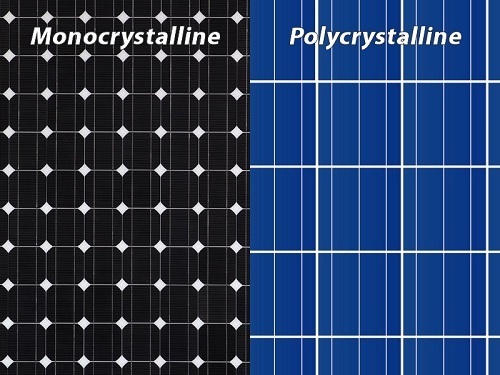
Disadvantages
These panels do not perform as efficiently as monocrystalline panels, which means you’ll need more of them. Those that have large wattage requirements and a smaller roof might find it difficult to provide all the power necessary with the space they have available.
Uses for Solar Panels
Now that you know they types of solar panels and how they work, let’s examine their many uses.
Industrial Power Plants
Several solar power plants have been built over the last few decades, mostly in dry desert regions such as Nevada and Southern California. These plants are able to generate substantial amounts of electricity to be added to the grid.
Solar power plants utilize hundreds and even thousands of carefully arranged solar panels that are made with quality solar cell materials. There are plans for numerous solar power plants to be added to the grids of several cities over the coming years.
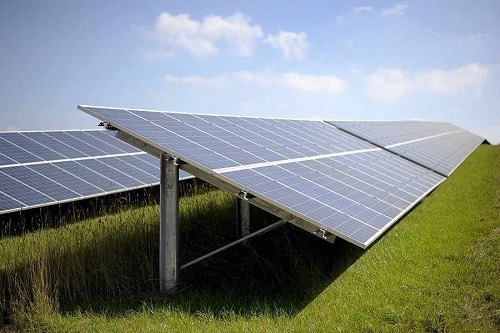
Home Use
More and more homes across the United States are opting to use solar energy for at least part of their energy needs. Others have solar systems that are used as an emergency backup in the case of an outage, both long and short term.
Homeowners that wish to have a constant stream of solar power will often install panels onto their roof, or lay out panels elsewhere on their property if possible. Depending on the town and municipality, homeowners can either opt to power their entire home with their own solar system, or supplement their current standard electrical use.
Many people have chosen to add solar systems to their homes for both environmental and economic reasons. Homeowners living in smog-heavy cities have increasingly moved towards solar energy for their homes, hoping to offset the pollution in their area while also easing the burden on the power grid itself, which can sometimes have failures in cities such as Los Angeles.
Either way, there is almost always a financial incentive for solar energy use at home, as federal tax credits and rebates can help to significantly offset the cost of these systems, leaving homeowners with savings both short and long term.
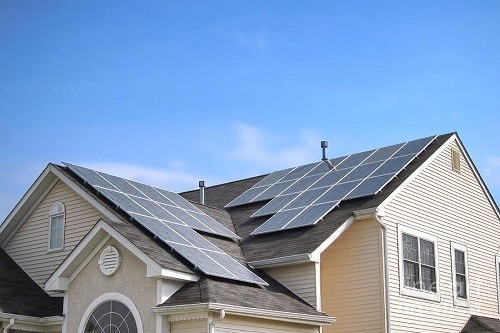
Farm Use
Solar panels have countless uses for agriculture. Several farmers across the United States use solar panels to power a variety of small equipment and appliances in numerous scenarios. Farmers can use solar energy to power fans for their livestock, water wells and pumps, lighting, and a whole slew of other uses as well.
Off the Grid Use
Solar panels are a popular choice for those that live in extremely remote areas, as they may lack access to a regulated power grid in the first place. Solar panels and generators allow these people to provide a constant stream of energy to their property without having to worry about utility bills, or even faulty service that often results when living remotely.
Solar energy systems are also very useful for those that own properties such as vacation and hunting cabins in remote areas. These cabins and houses offer an escape from city life and densely populated areas, but can also lack basic utilities.
Solar panels can thus be used to power either a few smaller appliances such as lights and a fan or two, or be a part of a larger system that provides adequate power similar to a full scale residential solar power system.
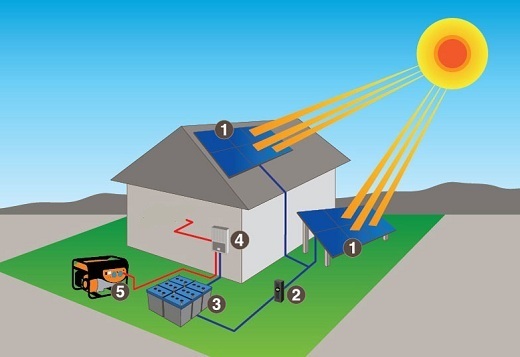
This allows the power to be there when the property owner needs it, as they may not be at the property often enough to keep constant service from a utility company.
Portable Generators
Most people are very familiar with portable generators. These devices can be used to supply power on the go, or even at home for a select amount of appliances and electronic devices.
In the past, portable generators were powered only by gas and propane, or were charged up prior to use via an AC adapter to a wall outlet. However, solar technology through solar panels has provided a way to charge these generators using the sun instead.
Portable solar generators vary in size and power, but always require the use of solar panels. Some have solar panels built in to the unit itself, while others have external systems that can sometimes be compacted, folded down, and carried like a briefcase.
Solar generators allow for portable energy that never runs out like gas and propane, while also cutting down significantly on noise and emissions.
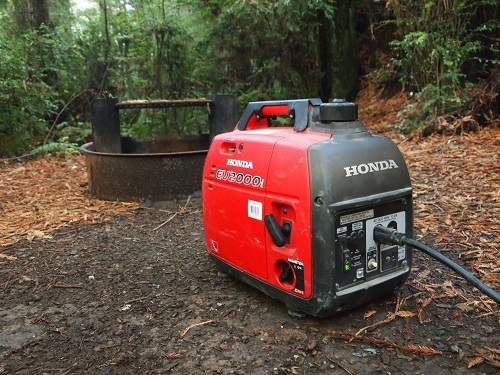
Solar Chargers
Smaller solar panels can be used as chargers for smaller devices and appliances. Conventional solar panels that are used with generators and solar power systems have to first be passed through either a power inverter, or a battery, as the wattage offered by these panels would damage a smaller device if connected directly.
Solar chargers offer a wattage that is compatible with the battery capabilities of devices like phones and tablets. The solar panels themselves are often the size of the average smartphone, making them easy to carry on the go. With these chargers, you can simply connect to the device, sit in the sun, and watch as your device charges.
Solar Backpacks
Solar backpacks work in a similar way to solar charger. With solar backpacks, the solar panel is found on the back of the backpack facing outwards, and usually takes up the whole outside space. Everything else about the backpack is the same as a normal one.
These backpacks are always charging when in the sun, and can be used to charge small devices when you are traveling on foot in the outdoors. Whether you are commuting in the city to and from work, or spending the day backpacking and hiking, your solar backpack’s panels will ensure that you have a way to keep your essential devices powered.
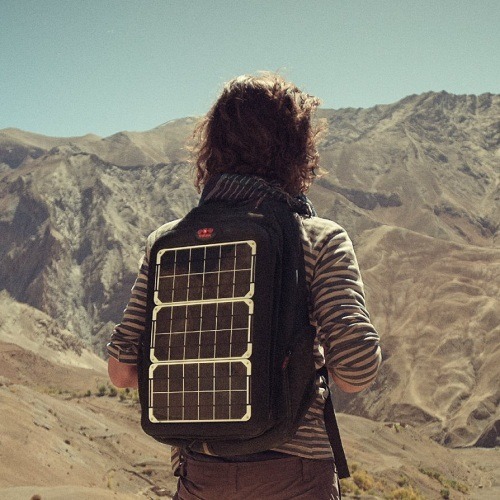
Solar backpack panels are often waterproof, and very resistant to scratches and impact, making them very durable.
Traffic Use
More and more towns and cities are relying on solar panels to power lower wattage devices such as traffic lights. The panels are often found in a very close proximity to the traffic lights, and collect just enough power during the day to power the traffic lights on through to the next.
It’s also very common to see solar panels used for streetlights lining city roads. Each light has its own panel either close to the ground, or placed on top of the light. This provides cities and municipalities a cost-effective and renewable way to power essential traffic devices on a permanent basis.
How to Build a Solar Panel
For those that have a basic understanding of electrical circuits topped off with a general knowledge of power tools and woodworking, building your own solar panel is relatively simple.
To get started, you must first decide on whether you want a 12v or 24v panel, and how big you want your panel to be. A large, flat, lightweight board made from quality wood makes for a good panel base.
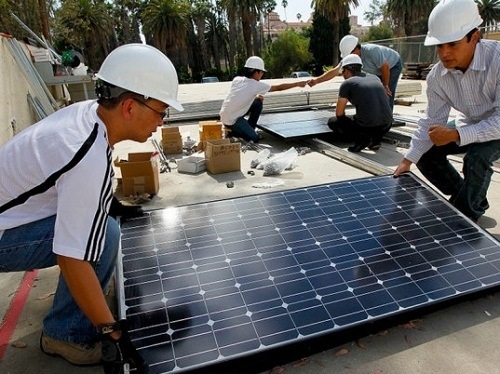
Once you have decided on the board and size, it’s time to acquire the solar cells themselves. This can be done through a variety of online merchants, including eBay. Try to keep the cost under $1.3 per watt.
After acquiring your solar cells, you can now put it all together. Lay out each panel where you’d like it placed on the panel, and trace around each one with a pencil. After doing so, drill a hole where each panel will go so that you have a space for the wire for each panel to come through.
When you are done planning the location of the panels, move on to wiring them together. This requires a soldering iron. Solder the positive lead of the wire to the negative lead of the next cell. Repeat for every cell until you have created a circuit that boasts a voltage of either 12 or 24 volts.
Now that you have created your panel circuit, stick the panels to their designated space on the board. Follow that by creating connection buses along the positive and negative leads, and then connect those buses in a parallel form.
Your panel is now ready to be tested for amperage and connected to an inverter.
How to Install Solar Panels
Solar panels can be installed in a variety of ways. If the application is home use in a large wattage capacity, you will need to install numerous panels on your roof. This can be done with solar panel mounts. These mounts come in three types: pole mounts, roof-ground mounts, and flush mounts.
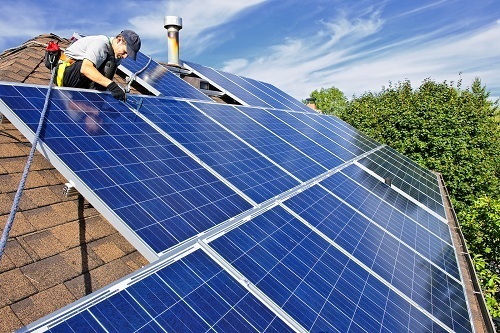
Installing solar panels on the roof requires access to the underside of your roof, as well as your home’s electrical circuit. The actual location of the solar panels on the roof should be determined on what direction your home faces, and what part of the roof will receive the most sunlight during the day.
Obstructions such as trees and structural parts of the home that can cast shadows on the panels should be avoided as well.
Once you have determined the location of your panels, affix them to your roof evenly using the desired mounting system, and then run the wires to your power inverter.
Should You Install Solar Panels Yourself?
The short answer to this question is going to be ‘no’ 99% of the time. Solar panels may acquire energy from the sun, but this doesn’t make them any more safe than any other electrical source. You are still dealing with high amounts of electricity, which makes it just as dangerous.
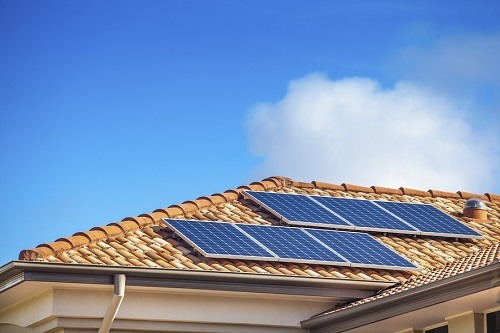
Furthermore, solar panels and systems can be extremely complicated. Only those with a high functioning knowledge of electrical systems should even attempt to do it themselves. The system and installation is further complicated for cities that require the home to still be a part of the electric grid.
If you are wanting to equip your home with permanent solar panels that feed into your power system, it’s always best to hire professionals who specialize in such a service.
Minor Installations
The only time a novice should attempt installation of solar panels is when the panel is part of a solar kit, such as a portable generator, or kit for an RV. These kits come with inverters, and everything is already compatible, along with being separate from any kind of grid. These kits are generally “plug-and-plays,” which means they are ready to be used straight out of the box, with no assembly.
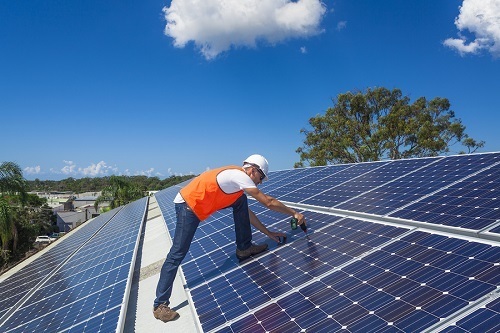
At that point, all you have left to do is either place the panel where you’d like, or perform a minor install by affixing it to a certain part of your home, RV, cabin, or campsite.
About the Author David Roberts
I'm a Mechanical Engineer who's obsessed with solar energy and sustainable living.

